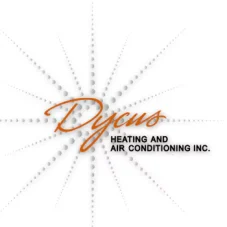Our Collaborative Approach
At Dycus Heating and Air Conditioning, Inc., our collaboration with TECH Clean California is rooted in a shared commitment to driving positive change. Together, we are united by a strategic approach that focuses on three key pillars, each contributing to the larger goal of decarbonizing California’s buildings:
Goal 1: Making Heat Pump Installation Seamless and Accessible
Our foremost objective is to simplify the integration of heat pumps for contractors and customers alike. By offering comprehensive resources, expertise, and support, we’re ensuring that the transition to cleaner heating solutions becomes effortless and accessible for all.
Goal 2: Showcasing Scalable Solutions through Regional Pilot Projects
Addressing market barriers is a collective effort, and through regional pilot projects, we’re demonstrating scalable solutions that address challenges hindering the adoption of cleaner heating technologies. These projects showcase the viability of these solutions and inspire confidence in their potential.
Goal 3: Providing Data-Driven Insights for Informed Decision-Making
Informed decisions are pivotal to achieving decarbonization goals. By contributing public data, thorough analyses, and case studies, we’re empowering decision-makers with the knowledge needed to steer California’s decarbonization journey in the right direction.
Unlocking Incentives and Resources
Are you seeking incentives or resources for contractors in the realm of cleaner heating solutions? Look no further than Dycus Heating and Air Conditioning, Inc.. As proud partners of TECH Clean California, we’re excited to connect you with valuable incentives and resources through The Switch Is On. Discover the benefits that await you as you embrace cleaner energy solutions.
Please find information on incentives and contractors capable of applying for incentives near you on switchison.org.
Any of the criteria can be met to be eligible. The projects do not have to meet all of them.
Yes. The non-equity portion of the multifamily program will be available statewide while incentive funds are available. Multifamily projects can qualify for the equity portion of the budget if they meet one of the equity definition criteria listed above.
We only publish data on fully paid incentive applications on this website. There are many incentive applications that have been reserved but are not yet fully processed.
Please navigate to the Download Data page and click the link called Download Dataset. This will provide an anonymized dataset of the latest TECH installations, including equipment information, site descriptors, installation details, and total project cost. These data are updated monthly.
They use the Cal Enviroscreen 4.0 definition of a DAC, which is based on the Census tract in which a project occurred. In the TECH Working Dataset, each TECH project is labeled via the “Disadvantaged Community” column as either TRUE or FALSE. Visit the California Office of Environmental Health Hazard Assessment (OEHHA)’s CalEnviroScreen page to learn more: https://oehha.ca.gov/calenviroscreen
Data currently on the website are only from the TECH market-rate single-family program, which was open to participants anywhere throughout the state and not specifically targeting DACs. A large portion of the TECH incentive budget was set aside for separate incentive programs that specifically target DACs, such as the TECH multifamily program, the TECH low-income program, and many of the TECH regional pilot programs. As these programs progress, the number of claims and amount of the TECH budget spent in DACs will increase. Visit the California Office of Environmental Health Hazard Assessment (OEHHA)’s CalEnviroScreen page to learn more about the definition of a DAC: https://oehha.ca.gov/calenviroscreen
Each row of the TECH Working Data Set describes a project in which a heat pump water heater or heat pump HVAC system was installed in an existing home or residence in California. We describe installations in existing buildings as heat pump retrofit projects.
Why did single family data appear faster than multifamily data?
As of August 2022, the TECH Working Data Set only contains data on heat pump installation projects in single family homes. Though both single-family and multifamily incentives were made available through TECH throughout all gas IOU territory starting in December 2021, there was generally much less lead time between submitting and incentive reservation and installing a heat pump in single-family homes versus multifamily housing buildings. For multifamily projects, property owners often submitted incentive reservations for incentives multiple months before the installation was planned. This is because heat pump retrofit projects in multifamily homes typically require more planning and coordination since they involve replacing space and/or water heating for many building occupants at a time or replacing large and complex central water heating or space heating systems.
When will multifamily data be available on this site?
Multifamily project data is expected to be added to the TECH Working Data Set starting at the beginning of 2023.
Please see the Data Key and Read Me file for the downloadable data set you are working with. You’ll find these links next to where you downloaded the data.
Total Project Cost is a data field provided by contractors when they submit an application for a TECH incentive. Contractors are instructed on the TECH incentive application to “Include total costs for the HP HVAC/HPWH installation only (material, labor, permitting, etc.) PRIOR to the TECH incentive being applied.”
Thus, the Total Project Cost field captures what the contractor would have charged the customer for the heat pump installation project in total, had the contractor not received the TECH incentive. TECH contractors are required to disclose the value of the incentive they expect to receive via TECH to the customer at the time of payment. This cost therefore includes elements of the project related to the heat pump installation, such as an electrical panel upgrade or a smart thermostat installation. Additional elements of the installation that typically incur additional costs are denoted in the TECH Working Data Set.
Excel displays dates as integers unless you change the format of the cell to “Short Date.” You can highlight whole columns with date data and change the format of the column to Short Date to fix this issue.
Currently, they do not report the ZIP code in which each project happened in the TECH Working Data Set. They do this in order to ensure that we are not revealing information about individuals. For example, in some rural ZIP codes, there are very few residents and one could use the process of elimination to determine the home in which a TECH project happened simply by knowing the ZIP code and a few of the project details listed in the TECH Working Data Set.
As more projects are added to the TECH Working Data Set, they will consider adding ZIP codes once they are confident there is enough data to avoid disclosure of individuals’ information by reporting ZIP codes.
Residential addresses and personal contact information for occupants of homes where TECH projects occurred are Personally Identifiable Information (PII) and cannot be shared publicly. They provide several data points to help you identify critical elements of the location of each TECH installation, including the County, Gas IOU territory, California Climate Zone, and disadvantaged community status of the location of the project.
The Data Dictionary available for download alongside the TECH Working Data Set notes the Quality Assurance (QA) steps taken to remove erroneous data prior to publishing on this website. Data points that are removed are replaced with the text “Replaced during QA”.
Data is updated at least once per month with new projects that received a TECH incentive.
This is an alternative way of writing TRUE/FALSE that we need to use for some fields where there is incomplete data – where some rows have neither a 1 nor a 0, this means no data was provided by the contractor and none could be drawn from the relevant QPL. Meanwhile, a 0 means FALSE and a 1 means TRUE.
No, the TECH Working Data Set does not include contractor names – but you can find contractors who have installed a heat pump and received a TECH incentive in the Contractor Data webpage under Public Data.
As of August 2022, data does not denote whether the home in which the heat pump was installed has rooftop photovoltaic solar panels. They will soon add an indicator to each row of the TECH Working Data Set to indicate whether a project was performed at a house that had solar panels. We expect this to be available starting in the fourth quarter of 2022.
Please go to the “Download Data” webpage and you can download public data there.
We will publish meter-based analysis for a TECH participant once we have at least a year of post-installation meter data for that participant. That should begin for the very first TECH participants in Q1 2023, and will continue to grow in both breadth and depth over time as more time passes following TECH-funded installations.
The TECH team uses the CalTRACK methodology, an open-source code for determining avoided energy use. See more about CalTRACK here: https://www.caltrack.org/.
Energy usage is modeled via the CalTRACK 2.0 daily and hourly methods with the OpenEEmeter to disaggregate temperature-dependent, baseload, and discretionary usage within each fuel. The CalTRACK daily model defines a building’s energy consumption based on a linear relationship with outdoor weather conditions and the interaction between the building’s temperature dependence, occupancy status, and the time of week. The CalTRACK methods are based on industry guidelines established by The American Society of Heating, Refrigerating and Air-Conditioning Engineers and the Uniform Methods Project: Chapter 8 – Whole Building Methods and meet all International Performance Measurement and Verification Protocol (IPMVP Option C) requirements. CalTRACK also specifies rigorous steps for data cleaning and organization and weather station selection, among other technical factors. A combination of daily and hourly models is used to disaggregate metered usage.
Disaggregated usage categories are defined as follows:
Temperature-dependent usage is energy consumption that increases or decreases with temperature, with warm-weather-dependent usage defined as space cooling, and cool-weather-dependent usage defined as space heating.
Average baseload (always on) consumption is computed by first finding days where the CalTRACK daily model does not detect temperature-dependent usage. For these days hours are ranked from lowest to highest according to kWh usage. The average usage of hours ranked 2 – 4 are then averaged across the year and extrapolated to 8,760 hours. This would capture always-on end uses such as refrigeration and “vampire” loads from electronic devices in standby mode.
Discretionary usage is an estimate of a customer’s non-temperature-dependent, non-baseload usage that is independent of temperature. For example, cooking on an electric stove or using an electric clothes or hair dryer would be examples of discretionary usage.




